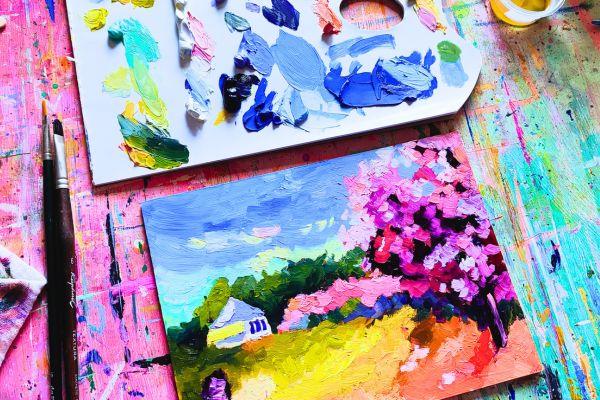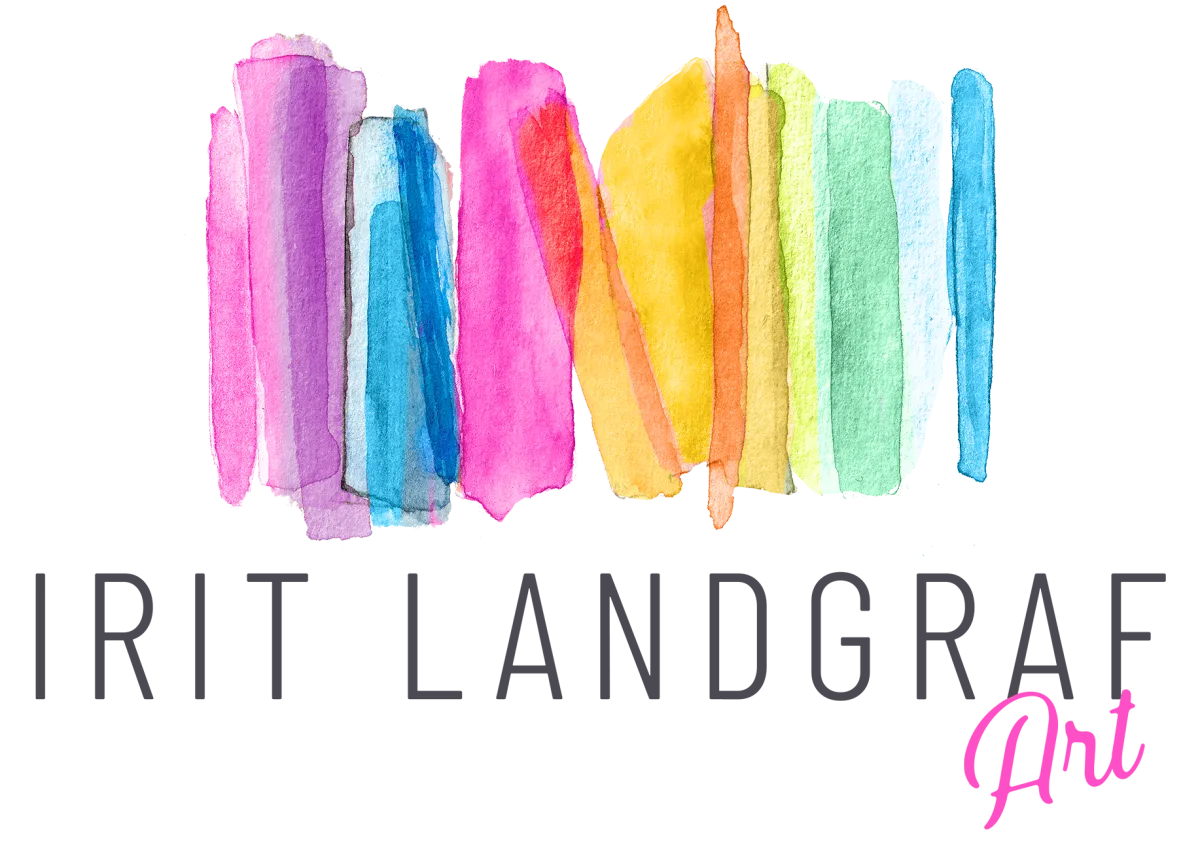The Daily Art Logs
Notes from a daily creative practice.

🎨 Fauvist Spring: Evolving a Painting Through Color, Courage, and Cherry Trees
Spring has a particular kind of magic—a riot of color, an explosion of energy—and this week, I leaned fully into that energy through paint.
Working on a small acrylic-on-wood panel, I began capturing a familiar scene from my town: cherry blossoms in full bloom, stretching across a sunny path, with a burst of color in every direction.
The initial layer, laid down in acrylic, set the tone with bold colors and gestural strokes. But I wanted more—more depth, more emotion, and a richer connection to my favorite art movement: Fauvism.
⏸️ Starting Bold, Then Stalling
Like many artists, I hit a moment of hesitation. After the first layer, the piece started to feel “precious.” I was afraid to ruin what was already working. That’s when I paused and asked myself: What would the Fauves do?
The answer: they’d throw caution out the window.

🖌️ Planning the Next Layer with Oil
To continue the work in oil (over the dry acrylic base), I laid out a game plan that moved from sky to middle ground to foreground—a top-to-bottom flow that allowed me to build harmony and mood as I moved.
Here’s how I broke it down:
🌤️ 1. Sky – Set the Tone
I began with expressive blending using cobalt and cerulean blues, soft pinks, and lavenders to bring in emotion and temperature shifts.
Touches of turquoise helped add unexpected tension.
This loosened me up and reconnected me with the fun of painting.
🌸 2. Cherry Trees – Build Energy
I layered oils over the acrylic blossoms, pushing colors toward Quinacridone Magenta, Dioxazine Purple, and even Cadmium Red for impact.
Shadows weren't black—they were rich violets and deep blues.
I used a palette knife in places to punch up texture and create that dancing, textural quality seen in works by Vlaminck and Derain.
🌾 3. Yellow Field – Let It Sing
I left the energetic yellow field for last so I could respond to the rest of the piece.
I added directional strokes to suggest wind and movement.
Sap green and even orange were layered in to vary the warmth and avoid monotony.
Considering this (but still too scared to mess it up!)
🖍️ 4. Line Work – Channeling Vlaminck
Using a small brush and mixtures like Ultramarine + Burnt Sienna, I would introduce expressive line work. Inspired by Maurice de Vlaminck, I could outline parts of the house, tree trunks, and edges of forms—not to define, but to energize. These lines become a rhythm tool, not a restraint.

🧪 Practicing Fauvist Principles
Before jumping back into the main painting, I did a quick color study. This little exercise helped unlock what I really wanted: to push chroma, simplify form, and rely on intuition more than observation. The sketch became a guide and a freedom boost.
🎨 What Would the Fauves Do?
Color as emotion: Pink isn’t just pink—it’s red, orange, violet, and even green.
Line as structure: Outlines define movement, not realism.
Flattened depth: Perspective is optional. Pattern and rhythm come first.
Brushwork speaks: Texture is content.

🌈 High Chroma, High Impact
As a lover of vibrant, high-chroma paintings, I leaned into pure pigments and expressive contrasts. Dabs of bright lemon yellow, fire orange, and saturated blue gave the scene a surreal, almost musical feel.
🖼️ The Takeaway
This process reminded me that painting isn’t about control—it’s about connection. Working in layers, shifting mediums, and channeling the Fauves let me rediscover the joy in color, chaos, and bold choices.
Whether you’re stuck in the “precious” phase or craving more chroma in your work, let the Fauves be your guide: paint boldly, trust your instincts, and let the color lead.

Want to try this process yourself? Start with something local and meaningful. Paint it fast. Then ask: How would Matisse or Vlaminck see this? And then go further.
🎨🔥🌸
I'd love to hear from you! You can find my on social media or email me-
All rights reserved | Privacy Policy | Terms & conditions




